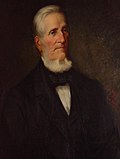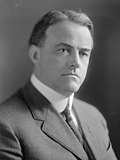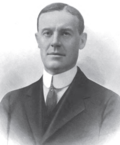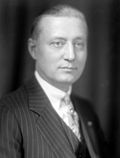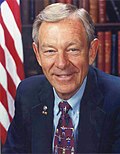
The governor of Ohio is the head of government of Ohio [1] and the commander-in-chief of the U.S. state's military forces. [2] The officeholder has a duty to enforce state laws, the power to either approve or veto bills passed by the Ohio General Assembly, [3] the power to convene the legislature [4] and the power to grant pardons, except in cases of treason and impeachment. [5]
Contents
There have been 64 governors of Ohio, serving 70 distinct terms. The longest term was held by Jim Rhodes, who was elected four times and served just under sixteen years in two non-consecutive periods of two terms each (1963–1971 and 1975–1983). The shortest terms were held by John William Brown and Nancy Hollister, who each served for only 11 days after the governors preceding them resigned in order to begin the terms to which they had been elected in the United States Senate; the shortest-serving elected governor was John M. Pattison, who died in office five months into his term.
The current governor is Republican Mike DeWine (R), who took office on January 14, 2019, and was re-elected in 2022. After eight years the incumbent is term-limited and ineligible to seek a third consecutive term in the 2026 Ohio gubernatorial election.



















